Sourdough bread has been celebrated for centuries as one of the most traditional and flavorful types of bread. But for those avoiding gluten, a common question arises: Is any sourdough bread gluten-free? If you're curious to dive deeper, explore Is All Sourdough Bread Gluten-Free? What You Need to Know. Unlike commercially produced bread that relies on quick-rise yeast, sourdough uses a natural fermentation process involving a "starter" made from water, flour, and naturally occurring wild yeast and bacteria. This process creates the bread’s distinct tangy flavor, chewy texture, and characteristic crust.
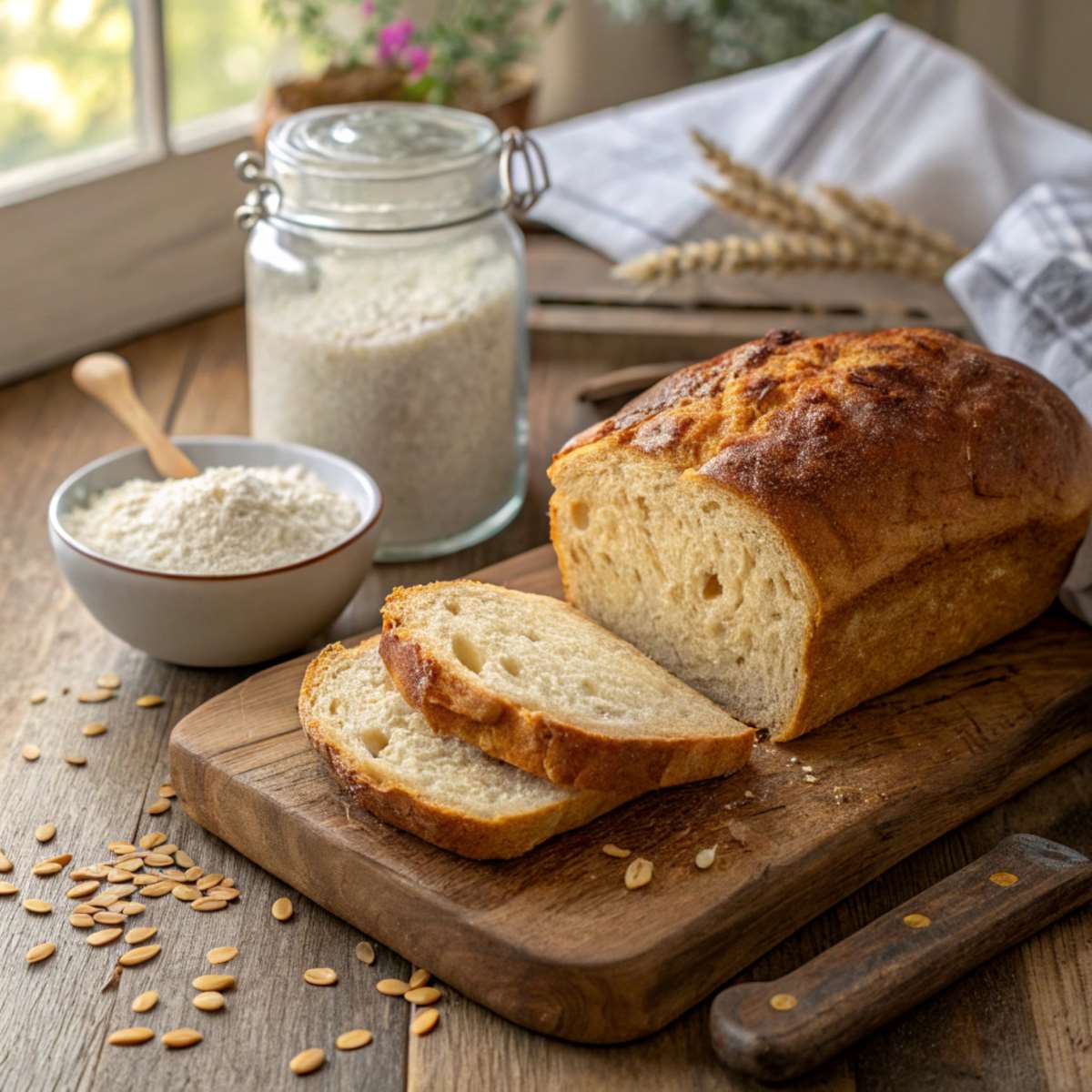
Jump to:
- Understanding Sourdough Bread
- What Is Gluten, and Why Avoid It?
- Is Traditional Sourdough Bread Gluten-Free?
- Gluten-Free Sourdough Bread
- Benefits of Gluten-Free Sourdough Bread
- Challenges of Gluten-Free Sourdough Bread
- How to Identify Gluten-Free Sourdough Bread
- Gluten-Free Sourdough Recipe
- Where to Buy Gluten-Free Sourdough Bread
- Myths and Facts About Gluten-Free Sourdough Bread
- Conclusion
- FAQs About Gluten-Free Sourdough Bread
Gluten, a protein found in wheat, barley, and rye, gives bread structure and elasticity. During kneading, gluten forms a stretchy network that traps gas bubbles produced during fermentation, leading to the bread’s fluffy rise. However, for people with gluten intolerance, sensitivity, or celiac disease, this very protein can trigger health issues.
Introduction to the main question: Is sourdough bread gluten-free?
Given sourdough’s natural fermentation process, there’s a common belief that sourdough bread might be safe for those avoiding gluten. Some even argue that fermentation reduces gluten levels, making sourdough a viable option for gluten-sensitive individuals. But does this hold? Let’s dive deeper into whether sourdough bread can ever truly be gluten-free and what alternatives exist for those needing a gluten-free lifestyle.
Understanding Sourdough Bread
What Is Sourdough Bread?
Sourdough bread is a type of bread made using a natural fermentation process rather than commercial yeast. This process starts with a "sourdough starter," a living culture of flour and water that ferments over time, developing a mix of wild yeast and beneficial bacteria. This starter is then used to leaven the bread dough, giving sourdough its unique flavor and texture. Its tangy taste, chewy crumb, and slightly crisp crus set sourdough apart. Slow fermentation enhances flavor and breaks down certain compounds in the flour, which can improve digestibility for some individuals.
Sourdough bread is a fascinating type of bread, but there are misconceptions about its gluten content. For a comprehensive breakdown, check out Is Sourdough Bread Gluten-Free? A Comprehensive Guide to Understanding and Enjoying Sourdough.
The Role of Fermentation in Sourdough
One key process in sourdough bread-making is fermentation, during which wild yeast and lactic acid bacteria work together to ferment sugars in the flour. This process produces carbon dioxide, which helps the dough rise, and lactic acid, which contributes to the bread's tangy flavor.
Fermentation is also thought to affect the structure of the dough's gluten. Studies suggest that the bacteria in sourdough may partially break down gluten proteins. However, this does not eliminate gluten, especially in bread made from wheat flour. This is why traditional sourdough is generally not safe for individuals with celiac disease or severe gluten intolerance.
How Sourdough Differs from Regular Bread
- Leavening Agent:
- Sourdough: Uses natural wild yeast and bacteria from the starter.
- Regular Bread: Relies on commercial baker’s yeast for quick rising.
- Fermentation Time:
- Sourdough: Requires long fermentation periods (8–24 hours).
- Regular Bread: Typically rises in 1–2 hours due to fast-acting yeast.
- Nutritional Profile:
- Sourdough’s extended fermentation breaks down phytic acid, which can increase mineral absorption in the gut. It makes sourdough bread slightly more nutritious than many conventional breads.
- Taste and Texture:
- Sourdough’s tangy flavor and chewy crumb result directly from fermentation. It offers a richer and more complex taste than most regular bread.
Misconceptions About Fermentation and Gluten Reduction
Many believe that the fermentation process in sourdough significantly reduces gluten, making it "gluten-friendly." While fermentation does break down some gluten proteins, it does not remove them completely. For people with celiac disease or severe gluten sensitivity, even small traces of gluten can cause adverse reactions, making traditional sourdough unsafe for these individuals.
What Is Gluten, and Why Avoid It?
The Basics of Gluten
Gluten is a group of proteins primarily found in wheat, barley, and rye. It consists of two main proteins, glutenin, and gliadin, responsible for the dough's elasticity and structure. When mixed with water, gluten forms a sticky, elastic network that allows bread to rise and maintain its shape.
Gluten is indispensable in baking. It creates bread's chewy texture, traps air bubbles during fermentation, and gives baked goods their characteristic structure. However, not everyone can tolerate gluten.
Gluten Sensitivities and Celiac Disease
1. Celiac Disease:
Celiac disease is an autoimmune disorder where ingesting gluten triggers an immune response that damages the small intestine. This can lead to symptoms like:
- Severe abdominal pain
- Diarrhea or constipation
- Fatigue
- Nutritional deficiencies
Even trace amounts of gluten (as low as 20 parts per million) can harm individuals with celiac disease, which is why a strict gluten-free diet is essential for them.
2. Non-Celiac Gluten Sensitivity (NCGS):
NCGS does not involve an autoimmune response or intestinal damage, unlike celiac disease. However, individuals with NCGS may experience symptoms such as bloating, headaches, and fatigue after consuming gluten.
This is an allergic reaction to proteins found in wheat, including gluten. Symptoms can range from mild (rash, nasal congestion) to severe (anaphylaxis). People with a wheat allergy must avoid all wheat-based products but might tolerate gluten from non-wheat sources.
Why Avoid Gluten?
For individuals with gluten-related disorders, consuming gluten can lead to both immediate discomfort and long-term health risks. These include:
- Chronic inflammation in the gut.
- Impaired nutrient absorption.
- Increased risk of other autoimmune disorders (for celiac patients).
Even for those without a diagnosed sensitivity, some find that reducing gluten helps improve digestion or alleviates bloating. However, such benefits are individual and not universal.
Gluten in Bread: A Breakdown
Traditional bread is made primarily with wheat flour, one of the richest sources of gluten. During the bread-making process, gluten forms the structural framework that supports the dough. While fermentation may slightly reduce the gluten content in sourdough bread, it does not make it safe for individuals with celiac disease or severe sensitivities.
Is Traditional Sourdough Bread Gluten-Free?
Does Fermentation Remove Gluten?
The fermentation process in sourdough bread affects gluten but does not eliminate it. During fermentation, lactic acid bacteria and wild yeast partially break down gluten proteins into smaller fragments. This can make sourdough slightly easier to digest for some people, particularly those with non-celiac gluten sensitivity (NCGS).
However, the key word here is "partially." Traditional sourdough bread made with wheat flour still contains significant amounts of gluten, well above the safe threshold for people with celiac disease.
Scientific Insights: Gluten Reduction in Sourdough Bread
Research shows that sourdough fermentation can reduce the gluten content in bread but not enough to make it gluten-free. For example:
- Studies have found that extended fermentation can reduce gluten levels by 50–90%.
- To be labeled gluten-free, a product must contain less than 20 parts per million (ppm). Traditional sourdough bread made with wheat flour typically exceeds this threshold, even after long fermentation.
While sourdough may feel gentler on the stomach for some, it is not a solution for those with medically diagnosed gluten-related disorders.
Testing Gluten Levels in Traditional Sourdough
Several studies have analyzed gluten content in sourdough bread:
- Study on fermentation: A long process (24–48 hours) can reduce but not eliminate gluten in wheat sourdough.
- Safety concerns for celiacs: Even after extended fermentation, sourdough often tests well above the safe gluten-free threshold of 20 ppm.
These findings confirm that individuals with celiac disease or severe gluten sensitivity should not rely on traditional sourdough as a gluten-free alternative.
Why Do Some People Tolerate Sourdough Better?
Some people without celiac disease but with milder gluten sensitivities report tolerating sourdough better than regular bread. Possible reasons include:
- Breakdown of FODMAPs: Fermentation reduces certain fermentable carbohydrates (FODMAPs) in the flour, which may ease digestion for sensitive individuals.
- Simpler Gluten Structure: The partial breakdown of gluten proteins makes them less complex, potentially reducing the immune response in non-celiac gluten sensitivity.
However, this improved tolerance does not mean sourdough is gluten-free or safe for everyone.
The Bottom Line on Traditional Sourdough
While traditional sourdough bread may have a lower gluten content than regular bread, it is not gluten-free. People with celiac disease or severe gluten intolerance should avoid it and opt for certified gluten-free alternatives.
Gluten-Free Sourdough Bread
What Makes Sourdough Bread Gluten-Free?
Gluten-free sourdough bread is specifically made using flours that do not contain gluten, such as:
- Rice flour
- Sorghum flour
- Tapioca flour
- Millet flour
The fermentation process in gluten-free sourdough is similar to traditional sourdough but starts with a gluten-free starter. This ensures the bread is completely gluten-free and safe for individuals with celiac disease or gluten sensitivity.
Additionally, gluten-free sourdough bread must meet strict certification standards. In many countries, the bread must contain less than 20 ppm of gluten.
How Gluten-Free Sourdough Is Made
1. The Gluten-Free Starter:
The foundation of gluten-free sourdough begins with a starter made from gluten-free flour and water. Over time, wild yeast and bacteria naturally develop in the starter, creating the fermentation necessary to leaven the bread.
- Common gluten-free flour for starters: brown rice flour, buckwheat flour, and sorghum flour.
2. Ingredients for Gluten-Free Dough:
In addition to the starter, gluten-free sourdough dough often includes:
- A blend of gluten-free flours (to mimic wheat flour's texture and structure).
- Starches like tapioca or potato starch have elasticity.
- Xanthan gum or psyllium husk binds the dough, as gluten-free dough lacks the natural elasticity of traditional dough.
3. Fermentation and Baking:
The dough ferments for several hours, giving it the tangy sourdough flavor. After proofing, the bread is baked, resulting in a loaf that resembles traditional sourdough in taste and texture—but without any gluten.
Common Grains and Flours Used in Gluten-Free Sourdough
- Brown Rice Flour: Light, neutral in taste, and rich in nutrients like magnesium and manganese.
- Sorghum Flour: Adds a mild, nutty flavor and helps mimic wheat’s texture.
- Tapioca Starch: Improves elasticity and gives the bread a soft, chewy crumb.
- Millet Flour: A naturally sweet, gluten-free grain that contributes to a balanced flavor.
- Buckwheat Flour: Despite its name, buckwheat is gluten-free and provides a hearty, earthy taste.
Steps to Prepare Gluten-Free Sourdough Bread
- Create a Starter: Combine equal parts gluten-free flour and water, and feed it daily for 5–7 days until it bubbles and doubles in size.
- Mix the Dough: Combine the active starter with gluten-free flour, water, salt, and any binding agents like psyllium husk.
- Ferment: Allow the dough to ferment for 8–12 hours. This creates the tangy flavor typical of sourdough.
- Shape and Proof: Shape the dough into a loaf and let it in a warm place for another 1–2 hours.
- Bake: Bake the loaf in a preheated oven, often with steam, to achieve a crispy crust.
Benefits of Gluten-Free Sourdough Bread
- Safe for Gluten-Sensitive Individuals: Certified gluten-free sourdough is safe for those with celiac disease or gluten intolerance.
- Digestive Benefits: The fermentation process can enhance gut health by introducing beneficial probiotics.
- Rich Flavor and Texture: Although gluten-free, this bread retains the traditional sourdough tangy flavor and hearty texture.
Benefits of Gluten-Free Sourdough Bread
1. Digestive Benefits
Gluten-free sourdough bread offers several advantages for digestion, largely due to the fermentation process:
- Easier Digestion: The fermentation process breaks down complex carbohydrates and proteins in the flour, making the bread easier to digest.
- Gut-Friendly Bacteria: The natural fermentation fosters the growth of beneficial probiotics, which can help improve gut health and support a balanced microbiome.
For people with sensitive stomachs, gluten-free sourdough bread may feel gentler than other gluten-free bread types.
2. Nutritional Advantages
Gluten-free sourdough bread often has a better nutrient profile than regular gluten-free bread. This is due to the natural fermentation process and the nutrient-dense flours used:
- Increased Mineral Absorption: Fermentation reduces phytic acid in the flour, a compound that can block the absorption of minerals like zinc, magnesium, and iron.
- Higher Fiber Content: Many gluten-free flours, such as sorghum and brown rice flour, are rich in fiber, which promotes digestive health.
Additionally, gluten-free sourdough bread is often free from artificial additives or preservatives, making it a more wholesome choice.
3. Rich Flavor and Texture
One of the standout benefits of gluten-free sourdough bread is its flavor. The natural fermentation creates a tangy, complex taste often lacking in other gluten-free bread. Additionally:
- Gluten-free sourdough has a texture closer to traditional sourdough. It offers a soft crumb and slightly chewy crust, contrasting standard gluten-free bread's often dense and dry texture.
4. Low Glycemic Index
Fermentation reduces the glycemic index (GI) of gluten-free sourdough bread, which can help:
- StabilStabilize sugar levels.
- Provide longer-lasting energy compared to regular gluten-free bread made with highly processed starches.
5. Versatility in the Kitchen
Gluten-free sourdough bread is incredibly versatile, making it a favorite for gluten-free diets:
- Toast: its chewy texture and tangy flavor make it perfect for breakfast toast.
- Sandwiches Unlike many gluten-free bread options, they hold up well to fillings without crumbling.
- Crostini and Croutons: Its sturdy crust makes it ideal for slicing and baking into crispy snacks.
6. Suitable for Various Diets
Gluten-free sourdough bread can cater to multiple dietary preferences:
- Vegan: Most gluten-free sourdough recipes are naturally vegan.
- Low-FODMAP: With the proper selection of gluten-free flour, it can be made low-FODMAP, suitable for individuals with irritable bowel syndrome (IBS).
Gluten-free sourdough bread has many health benefits, including being easier on digestion and rich in flavor. If you’re looking for more gluten-free options, check out Gluten-Free Bread Explained: Types, Benefits, and Baking Tips.
Challenges of Gluten-Free Sourdough Bread
1. Texture and Flavor Differences
While gluten-free sourdough bread has come a long way in replicating traditional sourdough, certain differences still exist:
- Lack of Gluten Structure: Gluten provides elasticity and stretch to traditional sourdough. Without it, gluten-free sourdough relies on starches and binding agents like xanthan gum or psyllium husk to hold its shape, often resulting in a denser loaf.
- Flavor Adjustments: Due to the different flours used, the tangy flavor of gluten-free sourdough can be milder than the traditional version. For example, unlike wheat flour, rice and sorghum flour have neutral profiles.
2. Cost and Accessibility
Gluten-free sourdough bread tends to be more expensive than traditional sourdough for several reasons:
- SpeciaSpecializeddients: Gluten-free flours, starches, and additives like xanthan gum are often pricier than wheat flour.
- Longer Preparation Time: Making gluten-free sourdough requires a more precise process to achieve desirable results, which can add to the cost.
- Limited Availability: Gluten-free sourdough bread is not as widely available in stores, often requiring specialty bakeries or online purchases.
3. Baking Challenges
Homemade Gluten-Free Sourdough:
Baking gluten-free sourdough at home can be tricky, especially for beginners. Challenges include:
- Starter Maintenance: A gluten-free sourdough starter requires consistent feeding with gluten-free flour, which can be costly and time-intensive.
- Achieving the Right Dough Consistency: Gluten-free dough is often stickier and harder to shape than traditional sourdough dough.
- Trial and Error: Experimenting with flour blends, hydration levels, and fermentation times can overwhelm first-timers.
Making gluten-free sourdough begins with a gluten-free starter. If you're ready to start your gluten-free baking journey, visit Gluten-Free Sourdough Starter: A Comprehensive Guide for Gluten-Free Bakers for detailed instructions and tips.
Store-Bought Gluten-Free Sourdough:
While convenient, store-bought options may:
- Lack of the artisanal quality of homemade versions.
- It contains additives or stabilizers that improve shelf life and texture, which some may prefer to avoid.
4. Shelf Life
Gluten-free sourdough bread tends to have a shorter shelf life compared to traditional bread:
- It can dry out quickly without the structure provided by gluten.
- Many gluten-free sourdough loaves must be frozen or eaten within a few days to maintain freshness.
5. Nutritional Variability
Not all gluten-free sourdough bread is created equal. Some versions may:
- Use highly refined starches like tapioca or white rice flour, which offer little nutritional value.
- Contain added sugars or oils to compensate for flavor and texture differences.
Check labels or choose recipes using whole-grain gluten-free flour like sorghum or buckwheat to ensure a healthier option.
6. Learning Curve for Beginners
Making gluten-free sourdough at home requires patience, practice, and an understanding of how alternative flavors behave. The absence of gluten complicates the fermentation process, and achieving a good rise can be challenging without proper binding agents.
Despite these challenges, many find the effort and cost worthwhile for gluten-free sourdough bread's unique flavor, texture, and health benefits.
How to Identify Gluten-Free Sourdough Bread
1. Reading Labels and Certifications
When purchasing gluten-free sourdough bread, it’s essential to carefully examine the packaging to ensure it is safe for consumption, especially if you have celiac disease or severe gluten intolerance. Here’s what to look for:
- Certified Gluten-Free Label:
Look for certification, such as the gluten-free symbol or phrases like "Certified Gluten-Free."These ensure that the bread has been tested and meets the standard of containing less than 20 parts per million (ppm) of gluten. - Ingredients List:
Ensure all flours and ingredients used are gluten-free. Avoid bread containing wheat, barley, rye, or malt-based ingredients. Common gluten-free flours include rice, sorghum, tapioca, and millet. - Cross-Contamination Warnings:
Check for disclaimers such as "May contain traces of gluten" or "Made in a facility that processes wheat." These products may pose a risk to those with severe sensitivities.
2. Understanding Gluten-Free Labeling Standards
- Certified Gluten-Free Bread: This label is regulated in many countries and guarantees safety for celiac individuals.
- "Gluten-Friendly" or "Low Gluten": These labels are unreliable for those with gluten intolerance or celiac disease. They indicate reduced gluten content but do not meet strict gluten-free standards.
3. Homemade vs. Store-Bought Gluten-Free Sourdough
Homemade Gluten-Free Sourdough:
Making gluten-free sourdough bread at home gives you complete control over the ingredients and preparation. To ensure your bread is 100% gluten-free:
- Use certified gluten-free flour and a dedicated gluten-free starter.
- Avoid cross-contamination by using separate utensils, bowls, and baking equipment.
Store-Bought Gluten-Free Sourdough:
When buying from a store or bakery:
- Verify that the bread is baked in a dedicated gluten-free facility.
- Research the brand to ensure they follow strict gluten-free practices.
- Look for reviews or customer feedback to ensure the bread meets your expectations for flavor and texture.
4. Tips for Identifying Gluten-Free Options in Bakeries
If you’re purchasing gluten-free sourdough from a local bakery:
- Ask Questions: Inquire about the flours used, the fermentation process, and how they prevent cross-contamination.
- Inspect the Environment: Ensure the bakery has a separate gluten-free preparation area and tools.
- Trust Established Bakeries: Opt for bakeries with a strong reputation for gluten-free products or certifications.
5. Avoiding Misleading Claims
- Be cautious of terms like “naturally gluten-free” or “low gluten” on sourdough labels. Traditional sourdough bread made with wheat flour is not gluten-free, even if fermented for a long time.
- Check for credible certifications and avoid relying on word-of-mouth claims unless you can verify the production process.
By understanding how to read labels, assess certifications, and ask the right questions, you can confidently identify gluten-free sourdough bread that is both safe and delicious.
Gluten-Free Sourdough Recipe
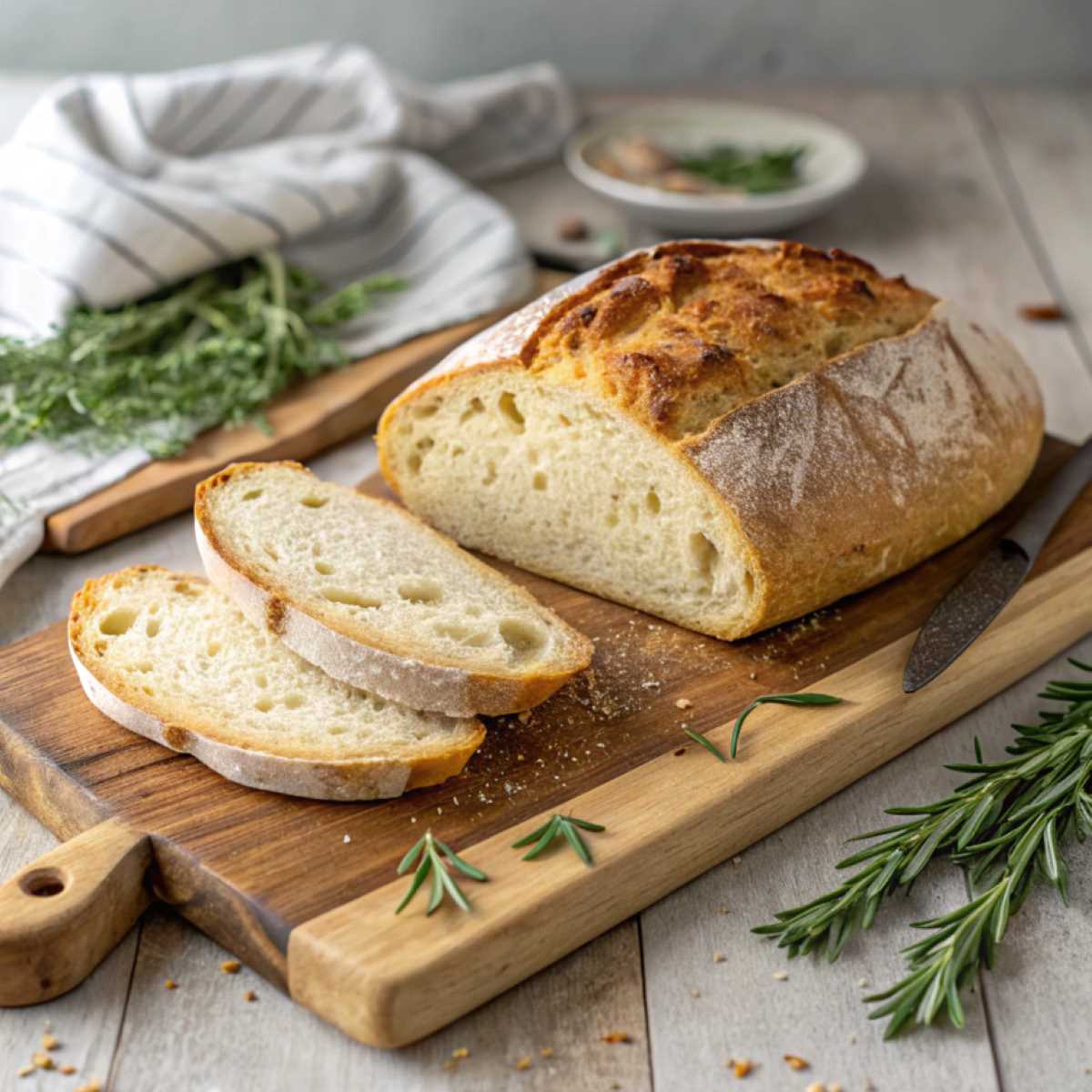
Ingredients and Equipment
for the Starter:
- 1 cup gluten-free flour (e.g., brown rice flour or sorghum flour)
- 1/2 cup filtered water
For the Dough:
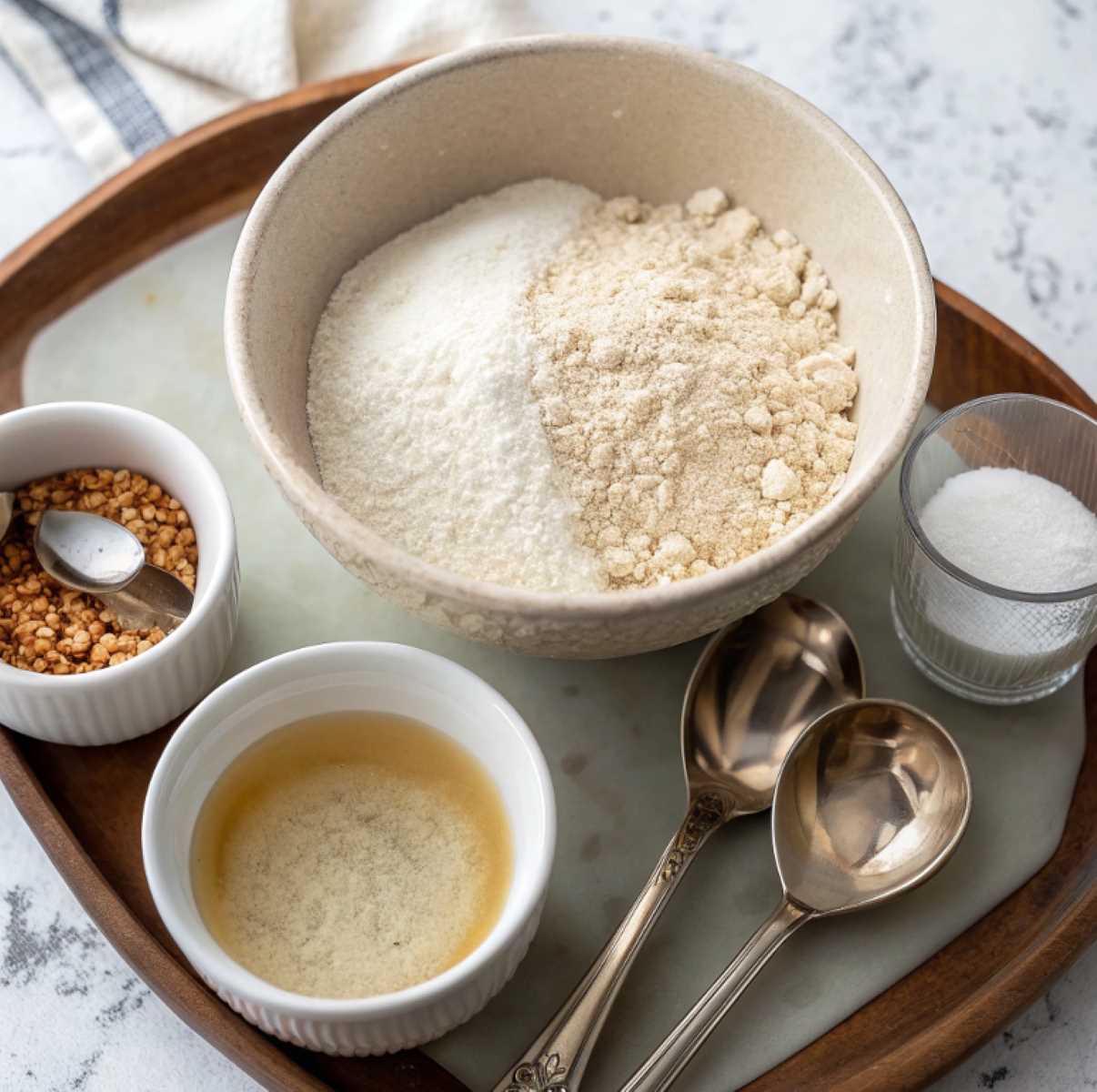
- 2 cups gluten-free flour blend (a mix of rice flour, sorghum flour, and tapioca starch works well)
- 1 cup active gluten-free sourdough starter
- 1 cup filtered water
- 1 tablespoon psyllium husk powder (or xanthan gum)
- 1 teaspoon salt
Equipment:
- Large mixing bowl
- Wooden spoon or spatula
- Kitchen scale (for accurate measurements)
- Proofing basket or a bowl lined with a clean kitchen towel
- Dutch oven or baking sheet
- Parchment paper
Step-by-Step Instructions
Make the Gluten-Free Starter
- Combine 1 cup gluten-free flour and 1/2 cup filtered water in a clean glass jar. Mix well.
- Cover loosely with a lid or a breathable cloth and let sit at room temperature.
- Feed the starter daily by discarding half of it and adding fresh gluten-free flour and water in equal amounts.
- After 5–7 days, your starter should be bubbly and ready for use.
Prepare the Dough
- In a large mixing bowl, combine 2 cups of gluten-free flour blend and 1 tablespoon of psyllium husk powder. Mix well.
- Add 1 cup active starter, 1 cup water, and 1 teaspoon salt. Stir until the dough is thick and sticky.
- Cover the bowl with a damp cloth and let the dough rest for 30 minutes. This will allow the psyllium husk to absorb moisture.
Knead and Shape
- Gently knead the dough for a few minutes to ensure all ingredients are fully combined.
- Shape the dough into a round loaf or place it in a proofing basket.
First Fermentation
- Cover the dough and let it ferment at room temperature for 8–12 hours (or overnight). This slow fermentation develops the tangy flavor typical of sourdough.
- The dough should rise slightly, but the gluten-free dough does not double in size like traditional sourdough.
Proofing and Second Fermentation
- After the first fermentation, gently reshape the dough and let it proof for another 1–2 hours.
Baking
- Preheat the oven to 450°F (230°C). If you're using a Dutch oven, place it in the oven while it's preheating.
- Transfer the dough onto a piece of parchment paper and score the top with a sharp knife or bread lame.
- Place the dough in the hot Dutch oven (or on a baking sheet) and cover with the lid. Bake for 30 minutes.
- Remove the lid and bake for 5–20 minutes until the crust is golden brown.
Cooling
- Allow the bread to cool completely on a wire rack before slicing. This helps the crumb set and prevents it from becoming gummy.
Tips for Success
- Patience is Key: Gluten-free sourdough takes time, especially for fermentation and proofing. Don’t rush the process.
- Hydration: Gluten-free flours absorb more water than wheat flour, so the dough often feels wetter and stickier. This is normal!
- Experiment: Adjust the flour blend to suit your taste and texture preferences. Adding buckwheat flour, for example, can create a heartier loaf.
This homemade gluten-free sourdough recipe offers the tangy flavor and hearty texture of traditional sourdough while being completely safe for those avoiding gluten.
Where to Buy Gluten-Free Sourdough Bread
1. Popular Brands Offering Gluten-Free Sourdough
Several brands of special gluten-free bread, including sourdough options. Here are some trusted names:
- Simple Kneads
- Offers artisan-style gluten-free sourdough bread flavors like sourdough quinoa and cinnamon raisin.
- Certified gluten-free and uses whole grain ingredients.
- Schär
- Known for a wide range of gluten-free products, including sourdough-style bread.
- Their loaves are soft, pre-sliced, and convenient for sandwiches.
- Canyon Bakehouse
- Features a sourdough-flavored gluten-free bread with a tangy taste and soft texture.
- Widely available in grocery stores and online.
2. Online Retailers and Delivery Services
Buying gluten-free sourdough bread online offers convenience, especially if you can’t find it locally. Some popular platforms include:
- Amazon: Stocks various gluten-free bread brands, including sourdough options.
- Gluten-Free Mall: A dedicated online store offering various certified gluten-free products.
- Simple Kneads Online Shop: Delivers fresh gluten-free sourdough bread directly to your doorstep.
3. Local Stores and Specialty Bakeries
Grocery Chains:
- Look for gluten-free bread in the grocery store sections such as Whole Foods Market, Sprouts Farmers Market, and Wegmans.
- Many stores carry frozen gluten-free sourdough bread for added freshness.
Local Artisan Bakeries:
- Some specialty bakeries focus on gluten-free products and may offer fresh gluten-free sourdough loaves.
- Call ahead to ensure their bread is certified gluten-free and baked in a dedicated facility.
4. Farmer’s Markets and Community Options
- Local farmer’s markets often feature small-scale bakeries or home bakers speciali gluten-free bread.
- Be sure to ask vendors about their ingredients and baking methods to verify the product's gluten-free status.
5. Tips for Buying Gluten-Free Sourdough Bread
- Check Certifications: Ensure the product is certified gluten-free, especially if you have celiac disease or a severe intolerance.
- Inspect Labels: Verify that the ingredients and preparation methods meet gluten-free standards.
- Try Local First: Supporting local bakeries can be a great way to enjoy freshly made, artisanal, gluten-free sourdough bread.
Myths and Facts About Gluten-Free Sourdough Bread
Myth 1: All Sourdough Bread Is Gluten-Free
The Reality:
This is one of the most common misconceptions about sourdough bread. While traditional sourdough fermentation reduces gluten content, it does not eliminate gluten. Even if fermented for a long time, bread made from wheat, barley, or rye flour still contains gluten levels that are unsafe for individuals with celiac disease or severe gluten sensitivity.
Myth 2: Fermentation Completely Breaks Down Gluten
The Reality:
While fermentation partially breaks down gluten proteins into smaller fragments, it does not completely remove them. Studies show that even extended fermentation leaves detectable gluten levels in wheat-based sourdough. Certified gluten-free flours are required to ensure the safety of gluten-free sourdough.
Myth 3: Gluten-Free Sourdough Is Inferior to Traditional Sourdough
The Reality:
Though gluten-free sourdough bread may differ slightly in texture, advances in baking techniques and ingredient blends have resulted in high-quality gluten-free options. Many gluten-free pieces of bread now rival traditional sourdough in taste and structure, offering a tangy flavor and chewy crumb.
Fact 1: Gluten-Free Sourdough Can Be Healthier Than Other Gluten-Free Bread
Why It’s True:
The fermentation process in gluten-free sourdough improves its nutritional profile compared to other gluten-free bread, which often relies on refined starches and artificial additives. Gluten-free sourdough tends to have:
- Better digestibility.
- More natural ingredients.
- A lower glycemic index.
Fact 2: Homemade Gluten-Free Sourdough Reduces Risk of Contamination
Why It’s True:
Homemade gluten-free sourdough bread is one of the safest options for celiac disease patients. Baking at home allows you to control every aspect of the process, from selecting certified gluten-free ingredients to ensuring that your tools and workspace are contamination-free.
Fact 3: Gluten-Free Sourdough Is Safe for People With Celiac Disease
Why It’s True:
Gluten-free sourdough bread is safe for individuals with celiac disease when made with certified gluten-free flour and in a gluten-free environment. Always look for the certified gluten-free label when purchasing or making it yourself.
Fact 4: Gluten-Free Sourdough Is a Versatile Dietary Option
Why It’s True:
Gluten-free sourdough bread suits various dietary needs, including vegan, low-FODMAP, and even some paleo variations (with grain-free flour). Thus, it is an inclusive option for individuals with specific dietary restrictions.
Fact 5: Not All Gluten-Free Sourdough Is Equal
Why It’s TTheugh's quality and nutritional value of gluten-free sourdough depends on the flour and methods used. Whole-grain gluten-free flours (like sorghum or millet) provide more nutrients than highly processed starches. Reading labels or making your read read ensures you get the best option.
Conclusion
Sourdough bread is beloved for its tangy flavor, chewy texture, and natural fermentation process. However, traditional versions made with wheat or rye are not gluten-free. Although fermentation reduces gluten levels, these breads remain unsafe for individuals with celiac disease or severe gluten sensitivity.
For those seeking gluten-free options, gluten-free sourdough bread offers a fantastic alternative. Made with certified gluten-free flours and prepared in a safe environment, it delivers the same tangy flavor and hearty texture as traditional sourdough while being suitable for those avoiding gluten.
Whether you bake it at home or purchase it from a trusted source, gluten-free sourdough bread is a versatile, nutritious, and delicious addition to your gluten-free diet. With growing availability and improvements in baking techniques, it’s easier than ever to enjoy this classic bread without compromising your health or preferences.
FAQs About Gluten-Free Sourdough Bread
1. Is traditional sourdough safe for gluten-sensitive individuals?
Traditional sourdough bread made with wheat, barley, or rye flour contains gluten and is unsafe for people with gluten intolerance or celiac disease.
2. What flours are used in gluten-free sourdough bread?
Common gluten-free flours include brown rice flour, sorghum flour, millet flour, buckwheat flour, and tapioca starch. These are often blended to achieve a texture similar to traditional sourdough bread.
3. Can I make gluten-free sourdough at home?
Yes! Gluten-free sourdough bread can be made at home using a gluten-free starter, certified gluten-free flour, and the right techniques. While it requires time and patience, homemade gluten-free sourdough ensures complete control over ingredients and cross-contamination.
4. How does gluten-free sourdough taste compare to regular sourdough?
Gluten-free sourdough has a similar tangy flavor, but its texture may be slightly denser due to the absence of gluten. However, advances in recipes and baking techniques have greatly improved its quality.
5. Where can I find reliable gluten-free sourdough recipes?
You can find gluten-free sourdough recipes on special blogs, cookbooks focused on gluten-free baking, or by visiting trusted websites like Simple Kneads or Gluten-Free Mall. These resources offer step-by-step guides to help you succeed.

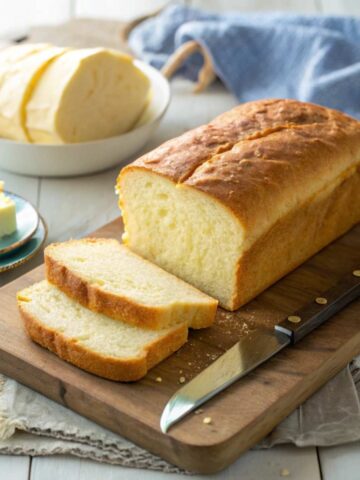

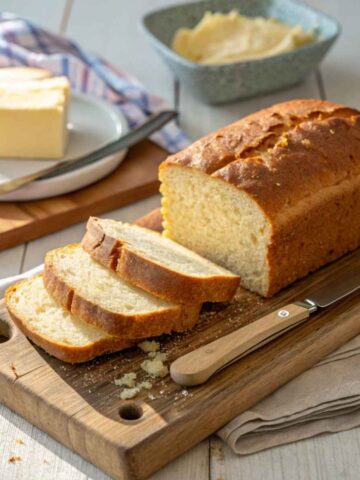

Leave a Reply